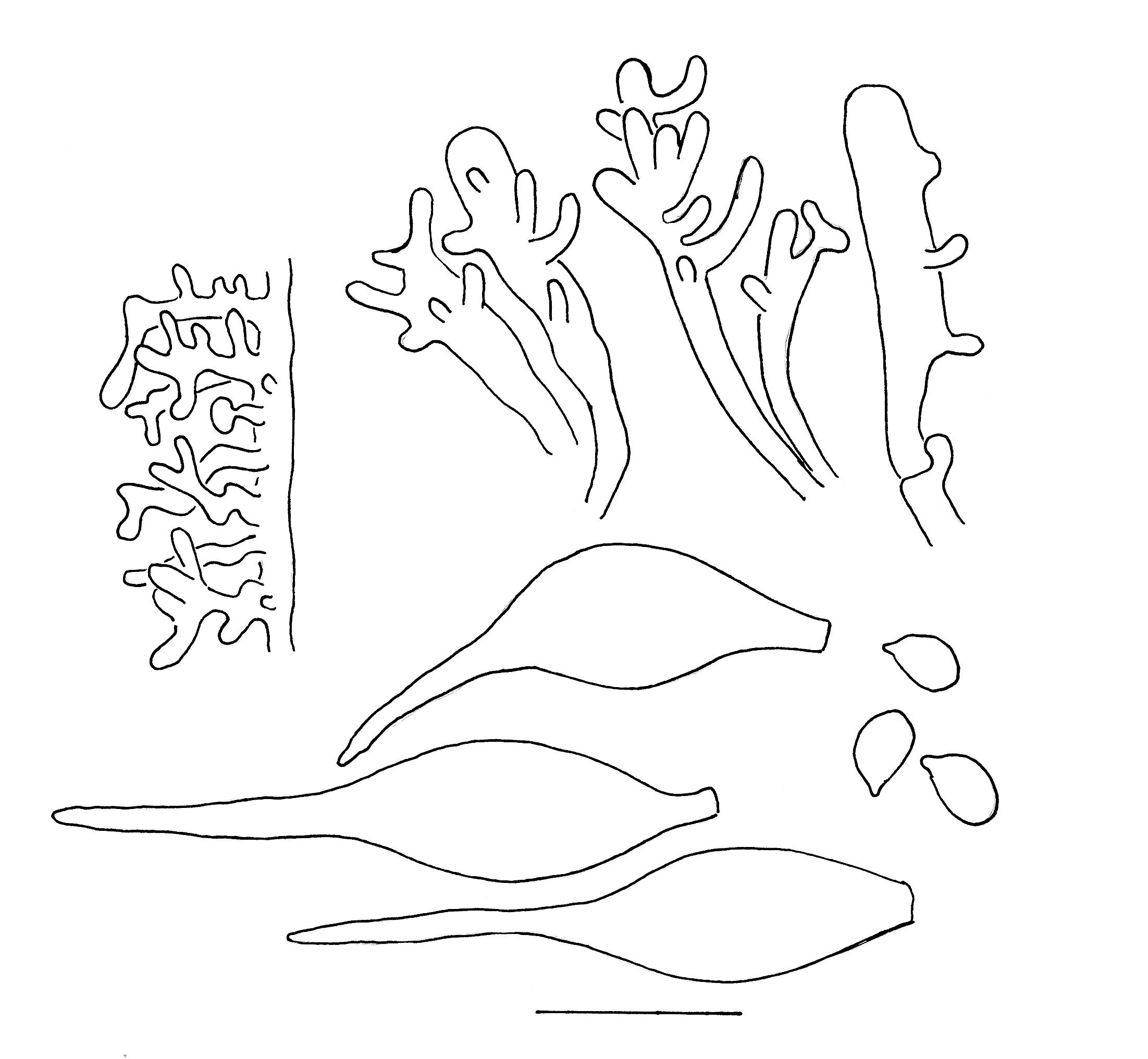Mycena haematopus
Mycena haematopus
Description
Cheilocystidia, hypha of the pileipellis, spores and caulocystidia.
Cap 10-25(-40) mm across, obtusely conical, campanulate to parabolical, somewhat flattening with age, with or without umbo, shallowly sulcate, translucent-striate, densely powdered or pruinose, glabrescent, hygrophanous, dark brown with a faint vinaceous shade at the centre, paler brown with a pinkish shade towards the margin, sometimes stained with purplish spots with age, drying pinkish white, the margin usually crenate. Gills 18-25 reaching the stem, narrowly to broadly adnate, decurrent with a tooth, becoming dorsally intervenose, whitish to grey, developing more brownish flesh-colour or pale vinaceous, sometimes becoming stained with purplish spots in age; the edge concolorous, sometimes purplish brown to blackish brown. Stem 30-70 x 1-3 mm, fragile, cylindrical to compressed, at first densely white-powdered, soon glabrescent, vinaceous red-brown, darker below, exuding a dark red-brown fluid when cut; the base densely covered with white fibrils. Odour indistinctive. Basidia 27-37 x 8-11 µm, clavate, 4-spored. Spores 8-9.5 x 5-6.5 µm, Q = 1.2-1.5, Qav = 1.4, rather broadly pip-shaped, smooth, amyloid. Cheilocystidia 36-70 x 9-15 µm, forming a sterile band, fusiform, with or without reddish brown contents, apically passing into a usually slender neck, more rarely with the neck somewhat branched. Pleurocystidia similar, if present. Lamellar trama dextrinoid. Hyphae of the pileipellis 2-4.5 µm wide, covered with diverticulate excrescences. Hyphae of the cortical layer of the stem 2-3.5 µm wide, smooth to sparsely covered with short cylindrical excrescences near the terminal cells; caulocystidia 20-55 x 3.5-12.5 µm, occuring in clusters, clavate to irregularly shaped, branched to very coarsely diverticulate. Clamps abundant at all tissues.
Ecology and distribution
In small groups or fasciculate on fallen branches and decayed wood of deciduous trees, less frequently on conifers. Summer to autumn. Common and widespread.

